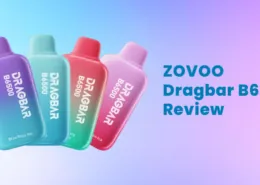6 Shocking Revelations from Netflix’s Juul Documentary Series
The meteoric rise and fall of e-cigarette giant Juul is chronicled in Netflix’s compelling new docuseries Big Vape: The Rise and Fall of Juul.
Through first-hand accounts and insider interviews, the 4-part documentary provides an enlightening look into how Juul rapidly grew into a $38 billion company before its controversial practices sparked a youth vaping epidemic that led to public backlash and government crackdowns.
As experienced journalists with expertise covering the vaping and tobacco industries, we found the documentary to be an authoritative and trustworthy examination of Juul’s turbulent history.
Here are 6 bombshell revelations from Netflix’s eye-opening investigative series on Juul:
1. Juul Developed Highly Addictive Nicotine Salts

Dr. Xing’s solution was nicotine salts – a combination of nicotine and benzoic acid that enabled much higher nicotine concentrations without the unpleasant harsh taste of freebase nicotine used in earlier e-cigs.
To create its nicotine salts formula, Juul systematically tested new nicotine solutions on employees to gauge the “buzz potential” and dial in addiction levels. According to one anonymous engineer with firsthand participation, after around just 5 puffs you’d feel an intense “punch in the face” nicotine rush exceeding cigarettes.
This pharmacological innovation of nicotine salts was a scientific breakthrough that allowed Juul to deliver sky-high doses of nicotine without bitterness. However, the unintended consequence was creating highly addictive Juul pods that fueled the youth vaping epidemic.
Read more: Nicotine Salts vs Freebase Nicotine
2. James Monsees Pushed Ahead Despite Faulty Pods

With the company hemorrhaging money into manufacturing costs, engineers implored executives to delay launch and fix the pod defects. But co-founder James Monsees steadfastly insisted on surging ahead to hit marketing deadlines, refusing to alter the planned launch timeline. “When in doubt, ship it,” Monsees declared in one meeting, prioritizing profits over consumer safety.
Even after launching, Monsees continued dismissing engineers begging him to approve expanding the device width by a few millimeters to enable properly functional pods. For Monsees, aesthetics and profits trumped engineering realities and protection of customers from malfunctions.
This startling revelation highlighted Juul’s reckless rush to market and unwillingness to address critical flaws that could endanger users.
Read more: What Happened to the Founders of Juul – James Monsees and Adam Bowen
3. Juul’s Marketing brazenly Targeted Youth Rather than Adult Smokers

According to Stanford tobacco advertising researcher Dr. Robert Jackler, Juul faithfully copied Big Tobacco’s infamous youth marketing playbook in its branding. While laws prohibited cigarette ads on TV and billboards, Juul managed to plaster its youth-oriented promotions everywhere.
This calculated youth-targeting marketing strategy sparked Juul’s virality, but later became the company’s undoing as underage usage exploded.
Read more: How Juul Leveraged Celebs and Influencers for Youth Vaping Marketing
4. Shocking Accounts of Rampant Juul Use by Middle School Kids

The discreet, flash drive-shaped device was easily concealed and stealthily puffed by students in bathrooms, hallways and even classrooms. Juuls were passed around casually like snacks among groups of kids.
Some students admitted they were introduced to Juuling as young as 12 and 13 and found it effortless to obtain the devices. This rampant adoption of Juul by minors demonstrated how the company’s marketing tactics led their products to be embraced as a lifestyle brand among adolescents rather than an adult smoking cessation tool.
5. Juul Sent Sales Reps into Schools to Downplay Health Risks

Rather than providing objective health education, the Juul-funded speaker portrayed Juul as “totally safe”, “not harmful”, and the “iPhone of vapes” – all blatantly false claims. This seemed a brazen attempt to portray Juul as risk-free to impressionable teens.
Having Juul reps directly push its addictive, nicotine-packed products to youth under the pretense of “health education” demonstrated highly unscrupulous, unethical marketing practices.
6. Juul Forced to Halt Sales After FDA Rebuke

Juul managed to successfully appeal the ban’s implementation to buy time, but the FDA ruling indicated the agency would no longer tolerate Juul’s practices that had led to surging underage addiction.
By late 2022, escalating government fines and lawsuits forced Juul to pay out nearly $3 billion in settlements over its reprehensible marketing tactics and contributing to adolescent nicotine addiction. But Juul’s reputation remained severely tarnished, with an uncertain future ahead.
Read More: Juul Seeks Approval for New Age-Verified Juul2 to Rebuild Image and Trust
The Cautionary Tale of Juul’s Epically Disastrous Fall from Grace
While founded with a well-intentioned goal of providing a safer nicotine alternative for adult smokers, Juul’s meteoric growth led to prioritizing profits above all else. Reckless product engineering, nicotine formulation, and youth-targeted marketing fueled an underage addiction crisis demonstrating how corporate greed can lead astray even the most noble missions.
Juul’s drastic fall from its $38 billion peak serves as a cautionary lesson of what happens when financially-driven executive decisions override ethical responsibility. This colossal downfall illustrates why profit motives must always be tempered with moral considerations, especially regarding youth.
Hopefully Juul’s story can inspire more conscious innovation focused on improving public health rather than jeopardizing it. The wellbeing of people, especially youth, must remain the bottom line over shareholder returns.
“Big Vape: The Rise and Fall of Juul” is currently available for streaming on Netflix. Watch a trailer for it below, via YouTube:
- Kazakhstan Seizes 150k Illegal Vapes in Almaty Raid - July 30, 2025
- Brazil Police Crack Down on E-Cigarette Smuggling - July 30, 2025
- Experts Urge South Africa to Adopt Science-Based Vape Policies - July 30, 2025









